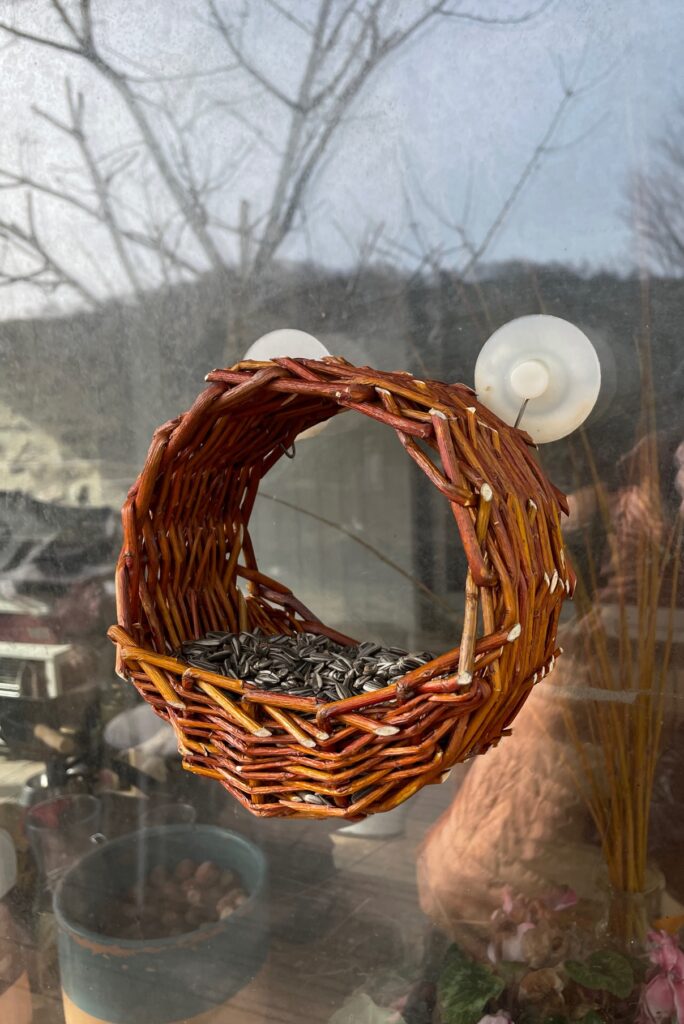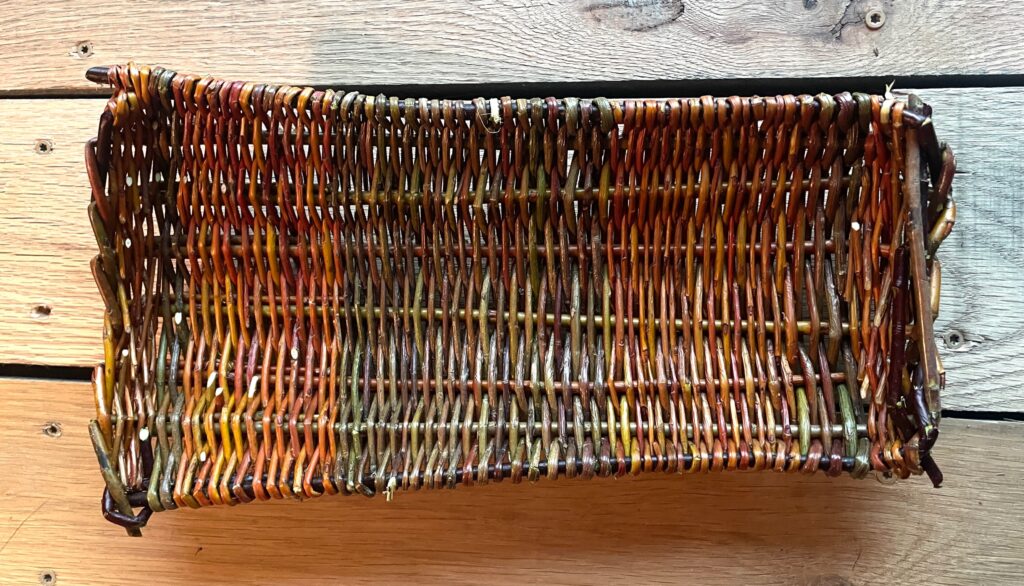I finally did my first willow weaving project !
A bird feeder to watch the birds ! To be installed on a window with suction cups. The birds that feed on it offer themselves to our delighted eyes.


A morning with the Birds
Every morning after his cup of coffee, my partner calls the birds with some whistles. He then fills the bird feeder with sunflower seeds. I hear him and smile. Soon, a ‘tap!‘ at the window lets us know that a tiny Carolina Wren is enjoying breakfast, standing on the edge of the bird feeder. A Tufted Titmouse soon follows, its crest giving it a mischievous look. A shy Northern Cardinal couple wait for their turn, perched on the willow fence. The male, a glorious red, offers a contrast with the thin mid-January snow resting delicately on the naked branches. The pale brown female is suspicious. She moves forward then hesitates. We whisper words of support but it is counterproductive, absurd even for the tiniest gesture or noise frightens her. Carolina Chickadee, Blue Jay and Dark-eyed Junco will follow within the morning’s variations.
Audio and identifications made with the wonderful Merlin Bird ID app.

Weaving and Weeding
I’m happy Eli’s dad spontaneously offered to give me a weaving class and that it happened that same day. After insisting several times, more or less jokingly, the idea escaped me. I had even told him last summer: ‘I’ll weed if I can weave !‘
He showed me patiently how to select my willow sticks, the uprights and the weavers. I was able to use his tools and his awl to bend the uprights and create spaces within the tight weave. I learned the Three rod wale technique were three sticks following each other are used simultaneously.
Fix the fixation
The same week, in a state of frantic enthusiasm, I did four other bird feeders. I told myself (and my eyes-rolling boyfriend) that after making ten, the repetition would make my gestures more natural and my weaving would be worth something. The fifth bird feeder is nice and without obvious mistakes.
My limited fresh willow stock, recycled from the harvest’s rejects, put an end to my fixation.
The last project I did before flying back to France is a small tray with quite a few mistakes, some charming, some not so much (the uprights were too thick at the end to fold nicely!) .

My drive, or denial, made it so that it took me a long time to legitimate my intercostal pain. I only knew I had trouble sleeping on the side. I finally realized the pain had a direct link with the pressure I put on my fingers, hands, arms and upper body, with every willow stick.
Flower trays and Birds
Pressure and precision are the words that float in my head when I remember these weaving experiences. I’d like to learn how to make a handle and persevere with more trays. I’ll use them to harvest and dry my favorite flowers and herbs: chamomile, cornflower, lavender and sage. I also want to finish my ten bird feeders and share what I learned with my close ones. I’d like to sensitize them to feed the birds, especially in the winter.
The birds cited in this article can be found in the eBook « Living Willow Farm’s Winter Birds », available in the shop:
- Carolina Wren
- Tufted Titmouse
- Northern Cardinal
- Blue Jay
- Carolina Chickadee
- Dark-eyed Junco
- White-throated Sparrow

